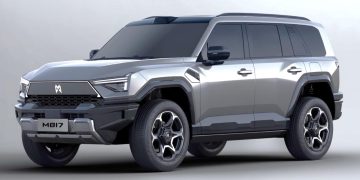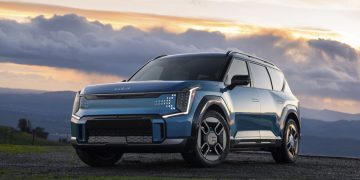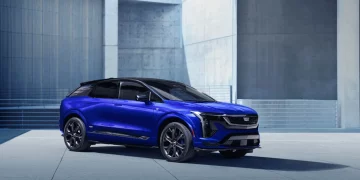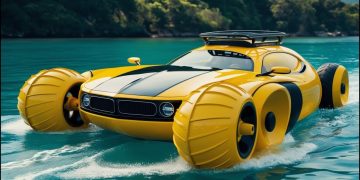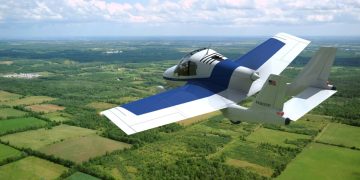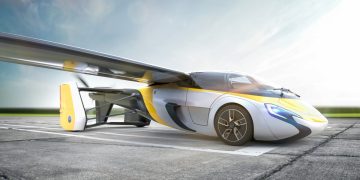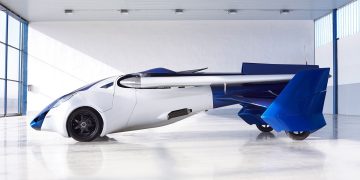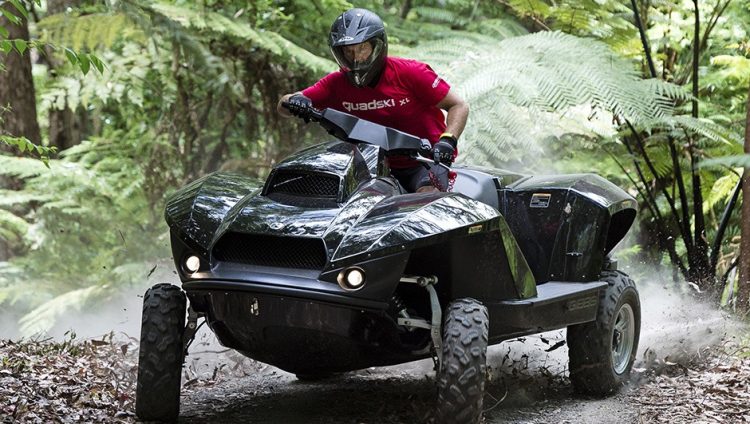1. The Origins of the Gibbs Quadski
Gibbs Amphibians, based in the United Kingdom, has been a pioneer in developing amphibious vehicles for over two decades. Founded by Neil Jenkins and other engineering experts, the company focused on creating vehicles capable of excelling both on land and in water. Their first breakthrough came in the form of the Gibbs Humdinga—a larger amphibious vehicle designed for military and emergency use.
However, it was the creation of the Gibbs Quadski that garnered the most attention. Introduced in 2012, the Quadski was the first production vehicle capable of seamlessly transitioning between land and water without the need for any significant manual changes or setup. Its design drew upon the principles of hydrodynamics and aerospace engineering, making it a truly unique product in the realm of personal transportation.
2. The Design and Engineering Behind the Quadski
2.1. All-Terrain Vehicle Meets Personal Watercraft
The Gibbs Quadski merges the characteristics of two well-known vehicles: an ATV and a PWC. Its main selling point is the ability to effortlessly switch between land and water, eliminating the need for a separate vehicle or lengthy preparation. This capability is facilitated by a specialized drive system and hydrodynamic hull design.
2.2. Key Features of the Quadski
- Engine: The Quadski is powered by a 1.3-liter, four-cylinder engine capable of producing approximately 140 horsepower. This engine powers the wheels while on land and is used to drive the water jet when the vehicle enters the water. This is a significant performance advantage compared to traditional amphibious vehicles that require separate engines for land and water propulsion.
- Land Mode: In land mode, the Quadski functions like a standard ATV. The vehicle’s four-wheel drive (4WD) system provides excellent traction and stability on rough terrain, from sand and dirt to mud and gravel. The suspension system is designed to absorb shocks from uneven surfaces, providing a smooth ride even on rugged trails.
- Water Mode: Upon entering water, the Quadski’s wheels retract automatically, and the vehicle transforms into a jet-powered personal watercraft. The water jet propulsion system allows the Quadski to reach speeds of up to 45 mph (72 km/h) on the water, making it comparable to high-performance PWCs like the Sea-Doo or Yamaha Waverunners.
- Hydrodynamic Hull: The hull of the Quadski is designed with hydrodynamic principles in mind, ensuring that it can cut through water efficiently while maintaining stability. The transition from land to water is smooth, and the vehicle remains stable even at high speeds.
- Weight and Size: The Quadski weighs about 1,100 pounds (500 kg), which is relatively light for an amphibious vehicle. Its dimensions (around 130 inches long and 65 inches wide) allow it to fit comfortably in a standard vehicle garage while maintaining sufficient space for passengers and equipment.
2.3. The Quadski’s Transition Mechanism
One of the most remarkable features of the Gibbs Quadski is its ability to switch between land and water modes quickly and efficiently. The transformation is automatic, with no manual intervention required by the driver. When the vehicle enters the water, a sophisticated hydraulic system retracts the wheels, allowing the Quadski to float and move like a traditional jet ski.
This process typically takes less than 5 seconds, enabling users to quickly transition between different environments. When returning to land, the system reverses, and the wheels emerge, allowing the Quadski to continue on land without any delay.
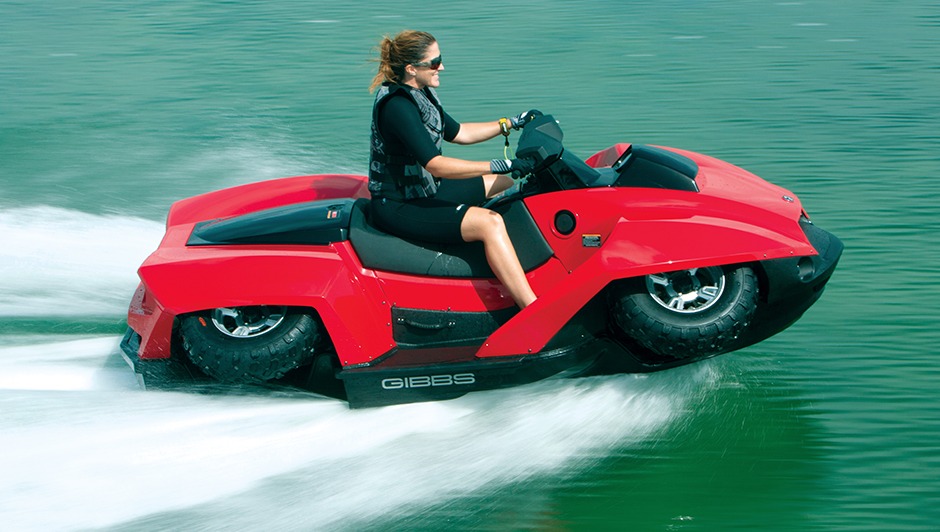
3. Performance and Handling: Land and Water
3.1. Performance on Land
On land, the Gibbs Quadski is a powerful, agile, and responsive ATV. Its design draws heavily from traditional off-road vehicles, allowing it to handle difficult terrain with ease. The vehicle’s all-terrain tires provide good traction on dirt roads, sand dunes, and gravel paths. Thanks to the four-wheel drive system and a sturdy suspension, the Quadski performs well on rough surfaces, with a maximum land speed of around 70 mph (113 km/h).
When navigating through soft sand or mud, the Quadski’s lightweight design and large tires help maintain momentum, making it an ideal vehicle for adventurous off-roading. Additionally, the Quadski’s high ground clearance allows it to traverse obstacles like rocks or fallen trees, adding to its all-terrain capability.
3.2. Performance on Water
In water mode, the Quadski transitions from a rugged ATV to a sleek personal watercraft capable of jet-powered propulsion. The water jet system is highly efficient, providing impressive speed and handling on the water. With a maximum speed of 45 mph (72 km/h), the Quadski can keep up with some of the best PWCs on the market, making it a popular choice for water sports enthusiasts.
The hydrodynamic hull ensures smooth and stable navigation, even when making sharp turns or riding through waves. The vehicle’s ability to maintain stability at high speeds is critical, especially when it comes to both performance and safety.
4. Use Cases: Recreation, Emergency, and Military
4.1. Recreational Use
The Gibbs Quadski is primarily designed for recreational use. It has garnered attention from adventure enthusiasts and outdoor sports lovers who value the ability to explore both land and water. Whether it’s beachside, lakeside, or on a river, the Quadski offers a unique and enjoyable experience. It’s ideal for:
- Beach Activities: Riders can drive on the sand, splash through the surf, and even go for a ride on the water—all with the same vehicle. It’s perfect for coastal areas where the landscape alternates between sandy dunes and water.
- Off-Road Adventures: In more remote locations, such as desert regions or rural areas with extensive wetlands or waterways, the Quadski offers unmatched versatility. Riders can navigate difficult terrain and cross rivers or lakes without needing to tow additional equipment.
- Water Sports: Whether it’s cruising on a lake or zipping across a river, the Quadski delivers an exhilarating water sports experience. With its high-speed capabilities, it appeals to thrill-seekers who enjoy riding fast and turning tight corners.
4.2. Emergency and Rescue Applications
The Quadski has the potential to serve in emergency response and search-and-rescue missions, particularly in areas where traditional vehicles might struggle to navigate. For example, in flood-prone areas, the Quadski could be used by rescue teams to reach stranded individuals on both land and water, especially when quick transitions are required.
Its ability to traverse difficult terrain such as flooded roads, debris-strewn environments, or swampy areas makes it a valuable tool for first responders in extreme conditions. Its compact size also allows it to access areas that might be unreachable by larger amphibious vehicles or boats.
4.3. Military Use
Although not initially designed for military use, the Gibbs Quadski’s amphibious capabilities make it an interesting option for military operations. The vehicle could be deployed in search-and-recovery operations, border patrol, or reconnaissance missions in areas with both land and water obstacles. Its ability to quickly switch between modes could prove advantageous in military operations that require rapid mobility.
The Gibbs Quadski’s off-road and on-water versatility allows it to be used in both urban warfare and rural operations, providing soldiers with the ability to navigate through various environments quickly and efficiently.
5. Limitations of the Gibbs Quadski
While the Gibbs Quadski offers impressive versatility and performance, it does have its limitations.
5.1. Weight and Size
The Quadski weighs around 1,100 pounds (500 kg), which is fairly heavy for a personal watercraft or ATV. Although this weight gives the vehicle durability and stability, it can also reduce its performance in certain environments. For example, its weight might make it less agile than lighter PWCs in the water.
5.2. Price
At a price point of around $40,000 to $50,000, the Gibbs Quadski is a significant investment. While its dual functionality justifies the high price tag, it remains out of reach for many recreational users. However, for niche markets like rescue operations, military, and adventure tourism, the Quadski presents an appealing option.
5.3. Limited Storage Space
Due to the Quadski’s compact design, there is limited













